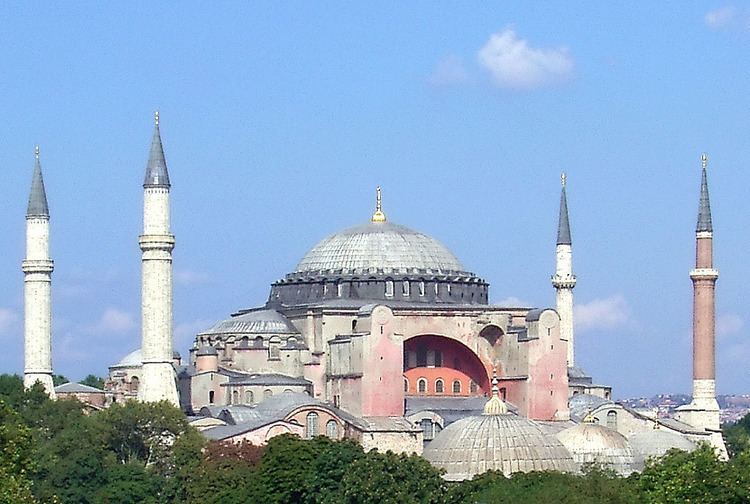 | ||
There are at least two runic inscriptions in Hagia Sophia's marble parapets. They may have been engraved by members of the Varangian Guard in Constantinople in the Viking Age.
Contents
The Halfdan inscription
The first runic inscription was discovered in 1964 on a parapet on the top floor of the southern gallery, and the discovery was published by Elisabeth Svärdström in "Runorna i Hagia Sofia", Fornvännen 65 (1970), 247-49. The inscription is worn down so only -alftan, which is the Norse name Halfdan, is legible. The remainder of the inscription is considered to be illegible, but it is possible that it followed the common formula "NN carved these runes".
The second inscription
A second inscription was discovered by Folke Högberg from Uppsala in 1975. It was discovered in a niche in the western part of the same gallery as the first inscription. The discovery was reported to the Department of Runes in Stockholm in 1984, but it was not published. The archaeologist Mats G. Larsson discovered the runes anew in 1988 and published the find in "Nyfunna runor i Hagia Sofia", Fornvännen 84 (1989), 12-14. He read ari:k and interpreted it as a possible "Ári m(ade)" or "Ári m(ade the runes)". Because of the uncertainty in the reading, the inscription was not registered in the periodical Nytt om runer 4 of 1989.
Högberg had made a different reading from Larsson in 1975, and this reading was supported by Svein Indrelid, who is a professor of archaeology at the University of Bergen in 1997. The reading of Högberg and Indrelid is the man's name Árni and they consider the inscription to be pure graffiti, unlike Larsson. The latter learnt of Högberg's interpretation in 1989, but he defended his own interpretation.
More inscriptions
Professor Indrelid made copies of five possible runic inscriptions on the parapet and he handed them over to the Norwegian Runic archive in 1997. There may be additional runic inscriptions waiting to be found on the walls and other parts of the Hagia Sophia.
